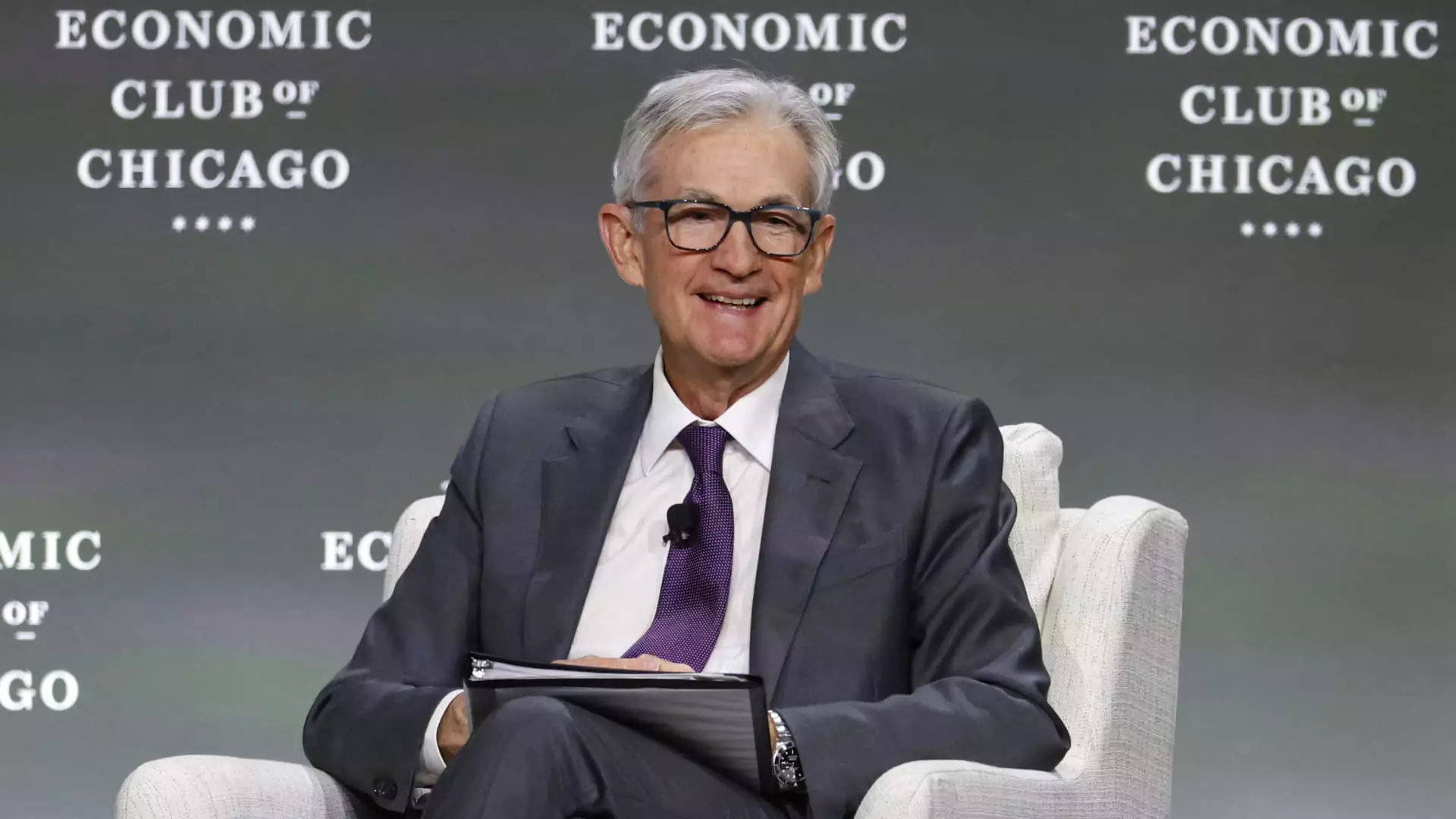As the Federal Reserve approaches its eagerly anticipated policy meeting this week, the prevailing sentiment among analysts and market watchers is one of profound stagnation. The central bank appears caught in a bind, faced with both an economy that fluttered through the first quarter and an array of unresolved challenges, most notably President Donald Trump’s tariffs. Instead of considering a proactive approach to monetary policy, the Fed finds itself hesitating—a reaction that speaks volumes about the current state of economic affairs. This indecision highlights a larger trend that cannot be ignored; that is, unless one appreciates ambiguity, the Fed’s inaction can only be seen as detrimental to both market confidence and economic stability.
The Fed’s plight is painfully clear. Distinguished voices, like that of former Fed official Vincent Reinhart, emphasize the uncomfortable position that Fed Chair Jerome Powell will navigate during his press conference. In the face of increasing scrutiny and conflicting economic signals, the central bank is left playing the waiting game. There is little doubt that the operational mechanics of monetary policy are complex and require meticulous data analysis. Yet, one must question: is this over-cautiousness advantageous, or is it stifling a more dynamic economic response in an era marked by volatility?
Market Sentiments: A Fragile Foundation
Interest rates will not see a cut at this week’s gathering, as indicated by futures market pricing—an outcome accepted by many as a foregone conclusion. The fact that only a modest expectation remains for any adjustments in the near future reflects a broader anxiety that market players harbor. As they react to mixed signals concerning trade developments and consumer confidence, this situation underscores a palpable nervousness about the economic future.
The recent changes in tariff strategies, which hint at a less combative approach from the White House, have provided a ray of hope—but one has to wonder whether such optimism is just wishful thinking. The apparent alleviation of some tariff tensions does not eradicate the concerns of consumers and businesses, which remain firmly rooted in pessimism. Just as the U.S. economy showed positive job growth with the addition of 177,000 jobs last month, this well-intentioned advance is at risk of being overshadowed by the considerable inflation fears spurred by ongoing trade disputes.
It’s crucial to understand that consumer sentiment holds significant weight in any economic forecast. With optimism plummeting to multi-year lows, the risk is not merely an economic downturn; it’s a looming crisis of confidence that may infiltrate vital spending behaviors. The Fed’s hesitance to act decisively not only betrays this underlying anxiety but also risks exacerbating consumer fears during a critical juncture.
Powell’s Inquiries: A Robin Hood in Reverse?
As Fed Chair Powell prepares to confront these pressing questions, he is likely to field tough inquiries regarding the interplay between data trends and the ongoing uncertainty in policy direction. Will he display the audacity to take a bold step forward, or will he simply reiterate a cautious roadmap laden with indecision? Being situated at the nexus of political and economic discourse means that Powell not only has to satisfy the demands of the market but also navigate the minefield of potential influence from the White House.
This dynamic poses a critical dilemma: does Powell possess the fortitude to resist external pressures that aim to steer monetary policy towards populist ends? If he were to acquiesce to political pressures for rate cuts in the name of curtailing inflation and boosting growth, it would undermine the Fed’s credibility and the trust required for sound economic governance. It’s this delicate balance that becomes increasingly precarious amidst a torrent of conflicting information, creating an environment where the Fed is painted as a mere puppet on strings controlled by external economic forces.
Future Pathways and Kindling Concerns
Looking ahead, many economists maintain that the Fed will be obliged to adjust its stance cautiously as new data become available. With an estimated two rate cuts anticipated this year, there’s an emerging belief that any meaningful adjustment will likely be postponed until September. Yet, waiting too long may conjure its own set of issues. Economic indicators do not stand still; they evolve with the times, and any failure to act promptly could aggravate already simmering tensions within both domestic and global markets.
The looming question remains whether the Fed can effectively differentiate between transitory effects caused by tariffs and more enduring economic changes that might require immediate intervention. Reinhart’s assertion that the Fed appears united in its cautious approach is noteworthy; however, this sense of solidarity needs to translate into actionable insights that can inspire confidence among consumers and markets alike. If left unaddressed, these economic dynamics could spiral into a broader crisis, extinguishing any flicker of optimism in an already uncertain landscape.

